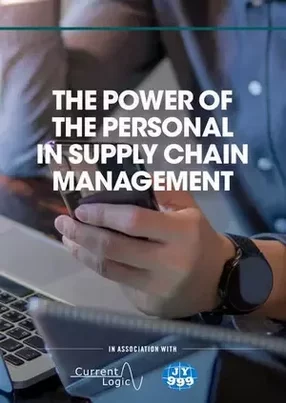Rohit Darodkar discusses how conscientiousness in supply chain management yields results
The nature of supply chain operations is as diverse as business itself. For every country of operations, international relationship and industry or sector, the complexities of procurement, logistics and supply chain morph and shift. Executives in the space often settle within their niche, but one who has not only led operations in multiple industries and wildly different territories is Rohit Darodkar, currently Global Procurement and Logistics Manager at Tritium, an Australian firm dedicated to EV charging infrastructure. Having begun his career in India in a graduate supply chain role at Tata Motors, Darodkar moved to Australia to complete his master’s in Mechanical Engineering at Queensland University of Technology, then his master’s in Business Management at Griffith University, majoring in Aviation. After that, Darodkar joined the newly instated Australian operations of Indian car manufacturing giant Mahindra & Mahindra where he remained for over six years. “I worked in positions from warehouse manager to spare parts manager and operations manager and, in those roles, I developed strategies and a dedicated focus on continuous improvement of end to end supply chain management,” says Darodkar, reflecting on his early career.
“In Australia, Mahindra was established in 2007 and I joined in 2010, so it was a really new organisation for the Australian market whilst already having a huge domestic footprint in India.” During his time with Mahindra, Darodkar was deeply involved in post-system development and the establishment of effective supply chain strategies for the company’s work in Australia, a drastically different business environment to its native India. “The Australian market is very different to other corners of the world,” he says. “The majority gets manufactured in China, Korea or Thailand; very little is local. The supply chain therefore becomes a strategic challenge because you cannot simply store these parts on your shelf. You have to order a certain amount to make it logical to pay freight charges on particular parts.” The question, Darodkar elaborates, is how to justify bulk orders from overseas when the demand for the related parts isn’t there. In addition to that, the lead time for such orders, along with the cost, must also be carefully balanced to avoid shortfalls in vital stocks for manufacturing. “You’ve got the challenge of generating demand for a particular product, having a proper strategy in place to support that demand, and ensuring the cost of the product still makes sense for it to be developed, manufactured and sold in Australia. An excellent storage strategy needs to be in place and maintained through Order Pattern Method, Reorder Point Process Method and Control Rhythm Method.” Technology is increasingly providing the answers, with data-driven insights making this balancing act far less challenging to maintain, but the importance of robust strategies cannot be overstated.
For Darodkar, effective relationships with vendors and employees are among the most potent tools a supply chain executive can access. He says it is important to remember that “everyone’s in this business to make money”, and that holding this reality at the front of his mind when managing vendor relationships is vital to striking the balance between cost and quality. “The more you squeeze on cost, the more it is reflected by the supplier in the product quality they deliver.” Of course, pricing strategies must reflect market viability - as everyone is in the business to generate value, costs must be in line with the feasibility of selling the end product. “You need to be open from a business perspective, negotiate those costs and manage the supplier by explaining that, if they cannot reduce the cost of a product, nobody will buy the end product, and everyone will go out of business.” There is a competitive edge to this as well, as manufacturers are rarely short of options when it comes to vendor selection. “You must always check where you stand in the market,” Darodkar says. “You cannot just rely on one supplier for a product. Supply chain is a demanding and continuously evolving sector - you need to keep your eyes open to new developments and offerings.” Reflecting on this not only enables the best value in product acquisition, but also ensures suppliers do not rest on their laurels when it comes to appealing to their own clients. He continues: “The supply chain world is changing rapidly, sometimes unpredictably, in line with the market dynamics across many industries. All of these factors are being affected by rapid shifts in customer and consumer buying-behaviour. Many markets which used to be purely local or regional have now become global, as have the supply chains that serve them. As a supply chain leader, you need to focus on what lies ahead and, to some extent, be able to predict it. This can only be possible with a thorough understanding of market dynamics.”
“Another thing,” Darodkar adds, “is to be mindful of the professional relationship with vendors. You need to maintain the bond with them that their product is not only required but is at the heart of your operations. They need to know they are important to your organisation, that their quality is good and that you expect that quality to be maintained. You must set KPIs for that quality, for deliveries and so on, but it’s a two-way relationship. If you give freedom for them to set KPIs for you as well, such as sales targets, timely payments and the like, it becomes a more open relationship and they take more interest in the business’s success and how they can influence it.”
Internally, Darodkar says a keen focus on managing change is also imperative to effective supply chain operations, particularly in the age of digital transformation. “People come to do things their own way, and there’s always a resistance to learn new things,” he says. “As the world evolves, you need to evolve, and change is the only thing that’s constant. As soon as you accept that change and believe that it’s important to your organisation, resistance goes down.” In manufacturing, it is not only changing technologies that necessitate a pro-change mindset, as the iterative nature of products means processes are similarly prone to alteration and optimisation. Instilling this vital cultural component is one of the leading challenges faced by executives in every department of every industry undergoing transformation, but Darodkar believes the answer to the riddle lies in the personal.
“You need to accept that you won’t ever have 100% support, and you need to accept that you cannot make decisions alone simply because you are the boss,” he explains. “You need to have confidence in your people to ensure that the decisions you make are effectively communicated and that everyone is on the same page. At the end of the day, no organisation is run by one person, it’s always a team effort. You need to understand your people and your resources, what works for them and what doesn’t, and from there you can better understand how to convince someone to come on board. Sometimes a simple coffee table discussion works, sometimes you need to take someone out for a beer, sometimes you need to be a strong authority, but often you don’t need to be pushy. Flexibility will ensure that change will not faze you or cause you undue stress. In turn, your team will be encouraged to embrace, rather than resist change. If what you are doing is right, people just need time and they will come on board."


